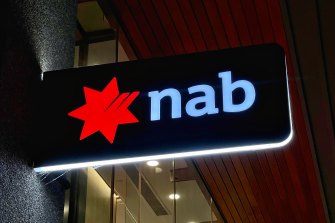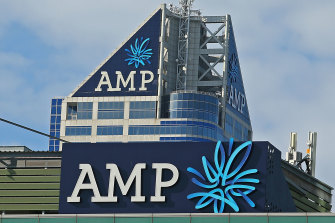Robinhood helped propel a “meme stock” frenzy this year that sent share prices of small companies on a roller-coaster ride. Last night, its own initial public offering was far more subdued.
Shares in the stock-trading startup opened trading at $US38, the same price as its offering, but then fell as much as 11 per cent.
They ended the day down 8.4 per cent at $US34.82, valuing the company at $US29 billion and showing that investors were skeptical of Robinhood’s grand mission of upending Wall Street.

Robinhood shares ended the day down 8.4% at $US34.82, valuing the company at $US29 billion.Credit:AP
Robinhood’s free stock-trading service has helped create the conditions for wild trading gyrations in meme stocks, driven by investors hyping their trades on social media.
The company’s offering is among the largest in a frenzied year for public market debuts, though few others have had the profile and level of controversy — including service outages, fines, congressional hearings, protests and memes — as Robinhood.
But the tepid trading debut suggested that there may be limits to investors’ euphoria for IPOs, even in a blockbuster year for them.
There were 213 in the first six months of the year, more than in any full year for the past decade, according to Renaissance Capital, which tracks IPOs. This week alone was set to have 25 companies go public in the United States, making it the busiest in two decades. Instacart, a grocery delivery company, and Nextdoor, a social network, are among the others expected to go public this year.
A first-day slump like Robinhood’s is rare. On average, shares in IPOs in the United States jumped 39 per cent on their first day of trading this year, according to Dealogic, a data provider. But they have since fallen by an average of 1.6 per cent, according to Renaissance Capital.
The unpredictability of Robinhood’s initial trading was exacerbated by an unusual move by the company, which has a mission of democratising finance.
Robinhood decided to sell as much as one-third of its offering to retail traders via its own app. Most other companies that have gone public have not done this or have offered only a small amount of shares to retail investors.
That offering could have suppressed early trading, since first-day stock price “pops” are often driven by demand from retail investors who were shut out of the IPO. Only around 20 per cent of the offering was sold to retail customers, a person with knowledge of the offering said, indicating less interest than expected.
Vlad Tenev, Robinhood’s CEO and a co-founder, said that the IPO was a “celebration of the individual investor in America.”
He added, “We’re just mindful that this is an important moment for our customers as well.”
New York Times





